Abstract
Steady-state fluorescence polarization measurements provide a relatively simple method for investigating the orientation of molecular components in ordered biological systems. However, the observed fluorescence polarization ratios also depend on any mobility of the fluorophores on the time scale of the fluorescence lifetime. Such mobility commonly arises from incomplete immobilization of a fluorescent probe on the macromolecule of interest. A theoretical formalism is presented for the interpretation of steady-state fluorescence polarization ratios in the presence of such rapid fluorophore motion. It is assumed that the fluorophores move freely within a cone between absorption and emission of a photon. Only one new parameter is introduced to describe fluorophore motion, the semi-angle of the cone, and this can be measured in separate experiments on an isotropic system. The fluorophore orientations are assumed to have cylindrical symmetry, but the symmetry axis need not be in the same plane as the center axes of the absorption and emission cones. This geometry applies to muscle and other biological fibers.
Full text
PDF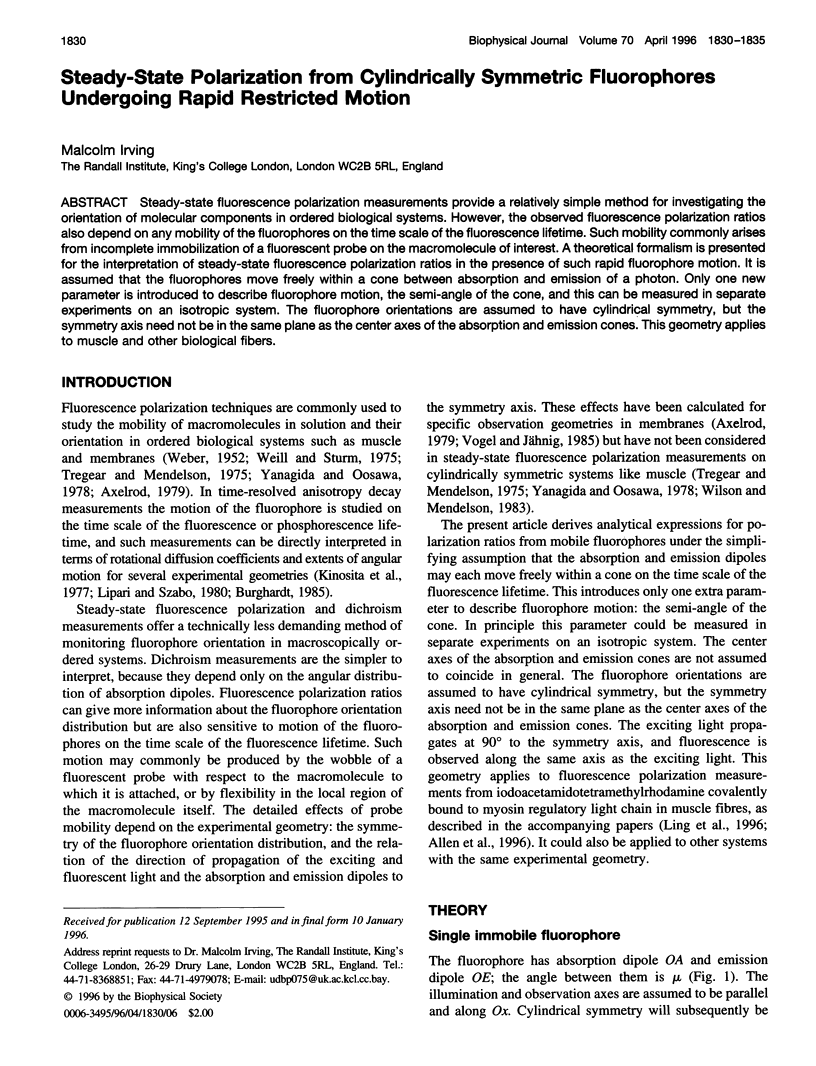
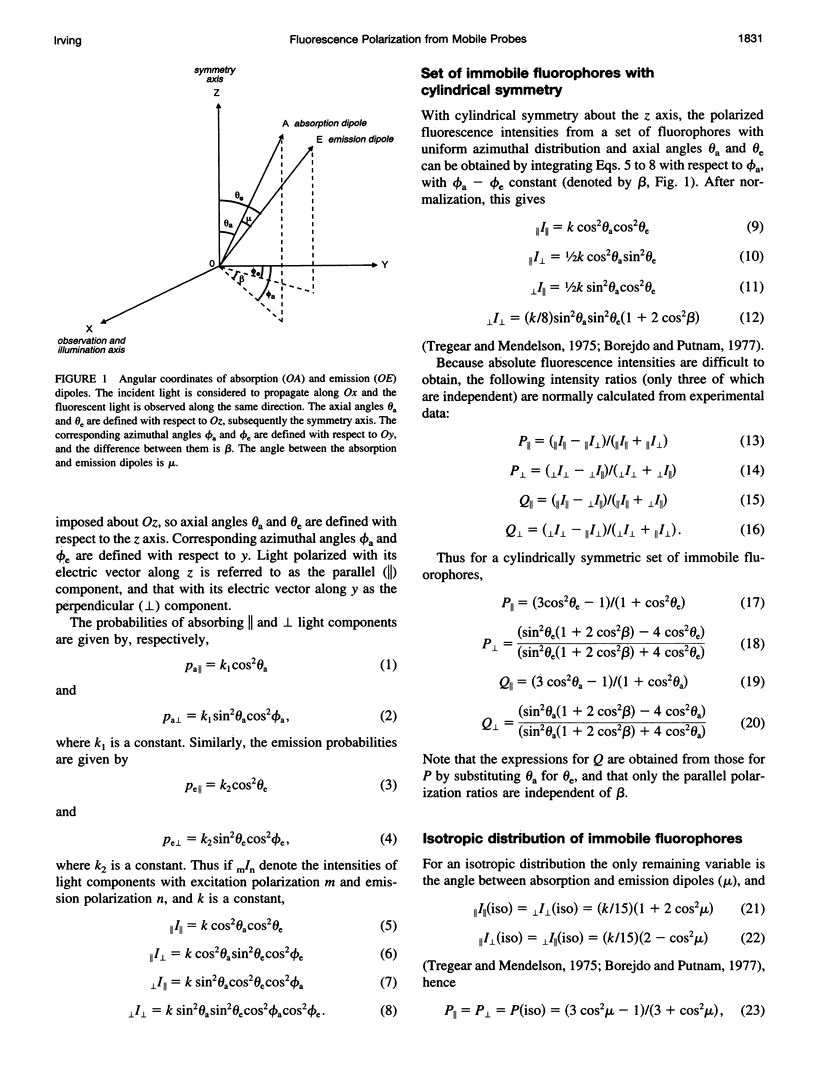
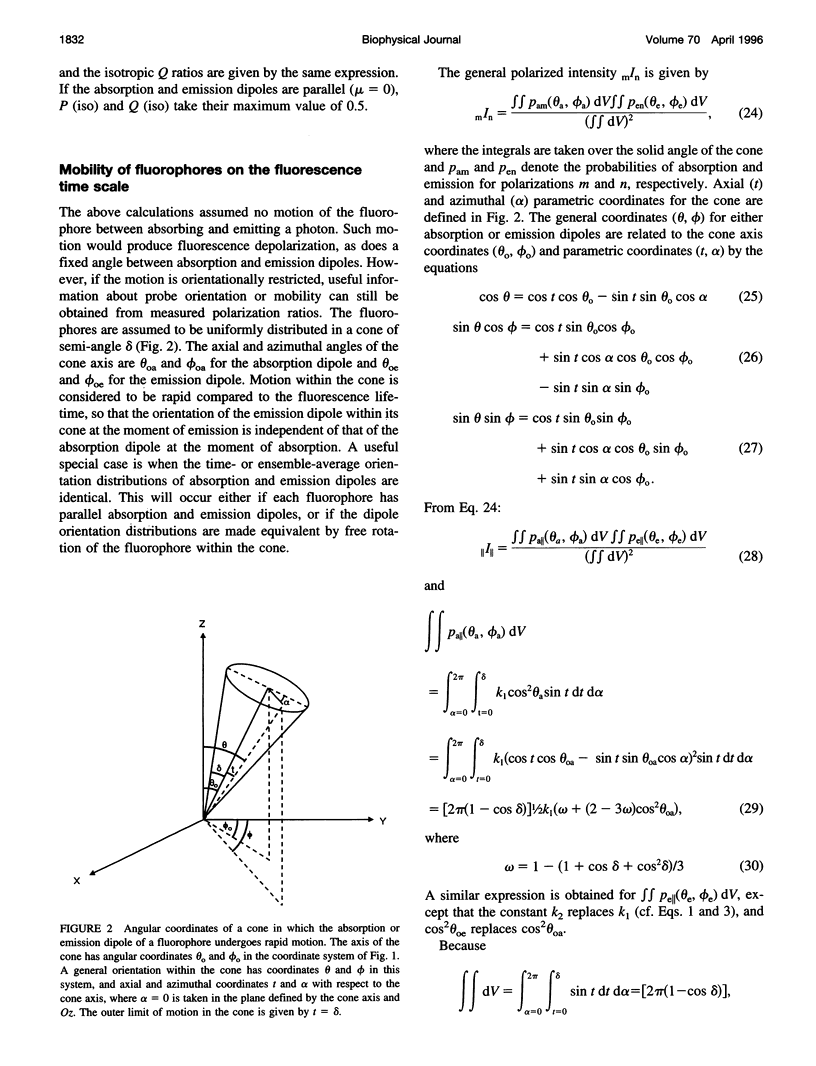
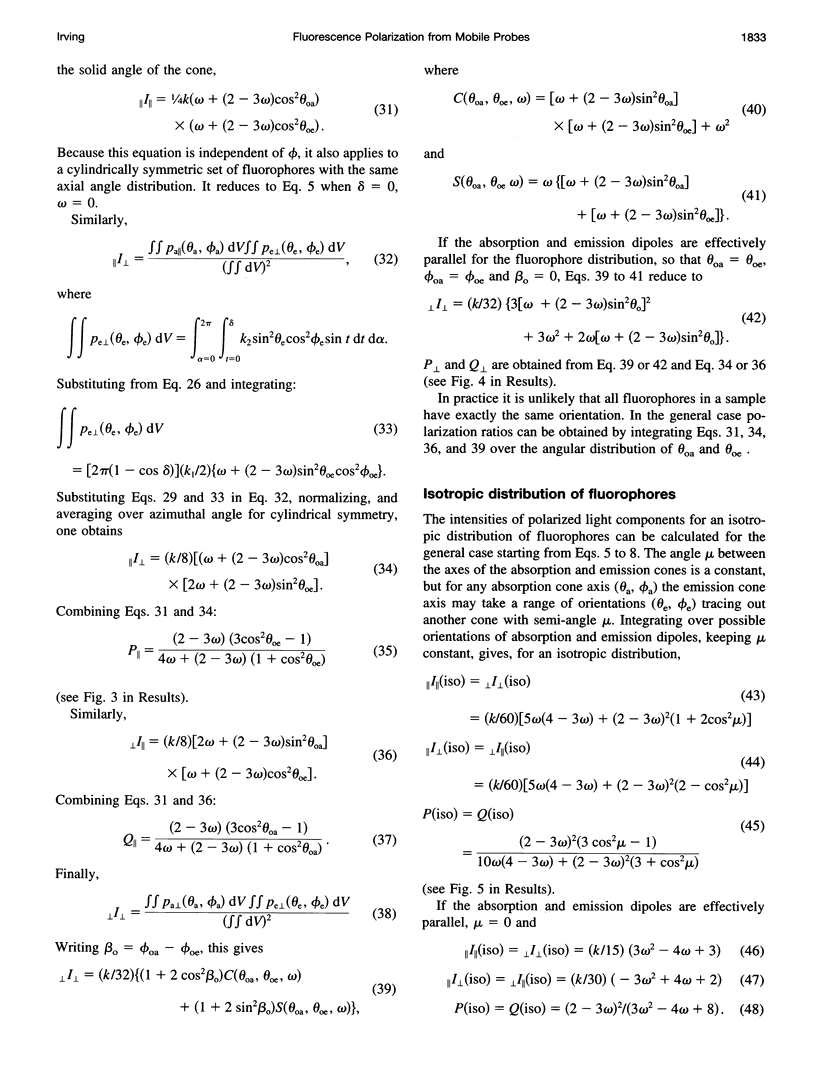
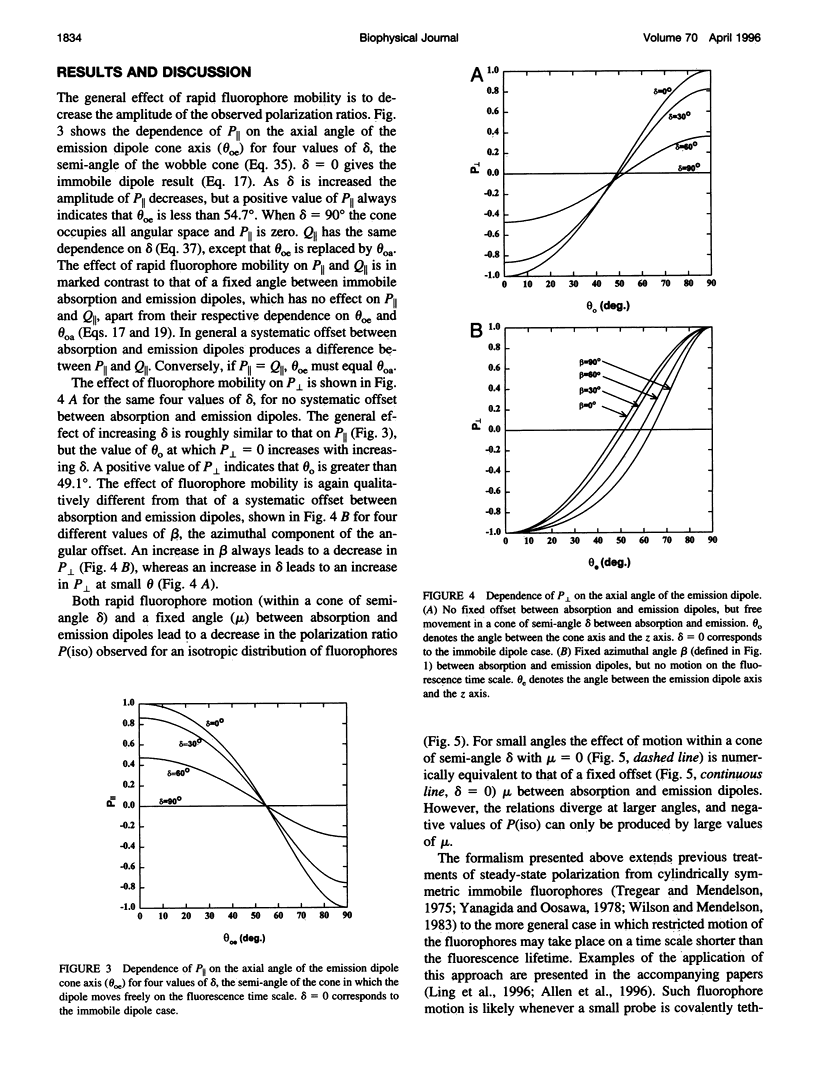
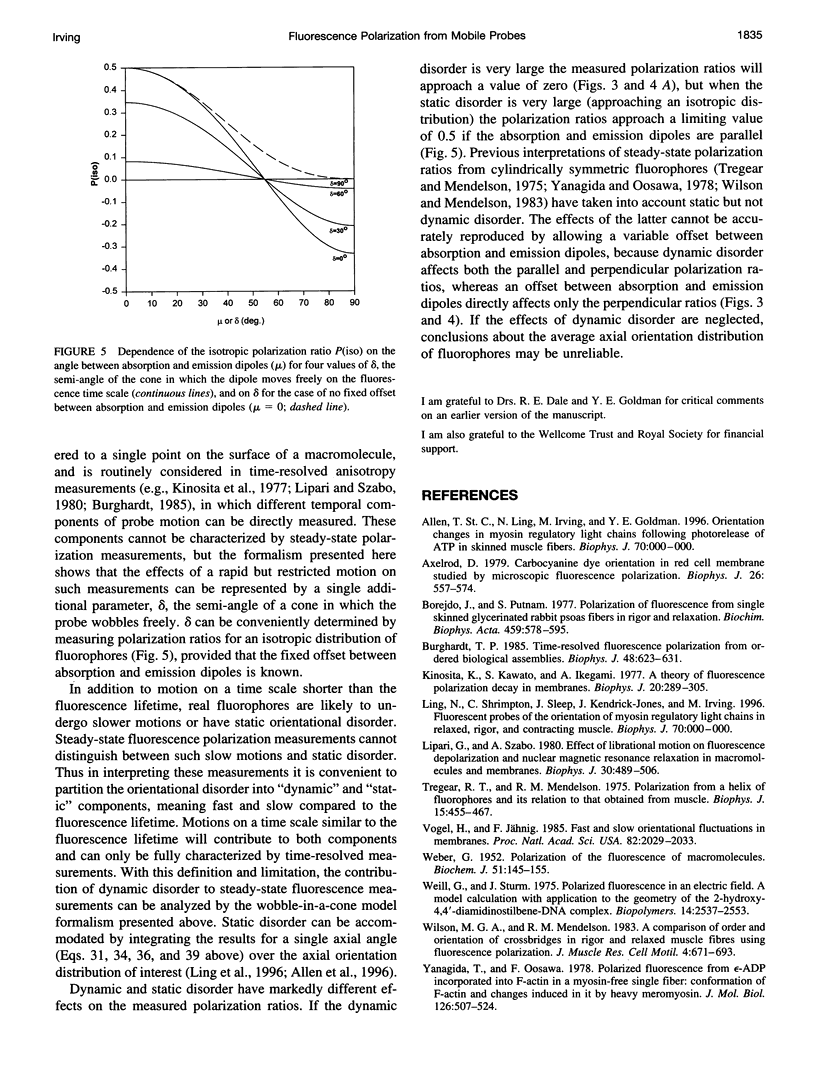
Selected References
These references are in PubMed. This may not be the complete list of references from this article.
- Axelrod D. Carbocyanine dye orientation in red cell membrane studied by microscopic fluorescence polarization. Biophys J. 1979 Jun;26(3):557–573. doi: 10.1016/S0006-3495(79)85271-6. [DOI] [PMC free article] [PubMed] [Google Scholar]
- Borejdo J., Putnam S. Polarization of fluorescence from single skinned glycerinated rabbit psoas fibers in rigor and relaxation. Biochim Biophys Acta. 1977 Mar 11;459(3):578–595. doi: 10.1016/0005-2728(77)90056-1. [DOI] [PubMed] [Google Scholar]
- Burghardt T. P. Time-resolved fluorescence polarization from ordered biological assemblies. Biophys J. 1985 Oct;48(4):623–631. doi: 10.1016/S0006-3495(85)83818-2. [DOI] [PMC free article] [PubMed] [Google Scholar]
- Kinosita K., Jr, Kawato S., Ikegami A. A theory of fluorescence polarization decay in membranes. Biophys J. 1977 Dec;20(3):289–305. doi: 10.1016/S0006-3495(77)85550-1. [DOI] [PMC free article] [PubMed] [Google Scholar]
- Lipari G., Szabo A. Effect of librational motion on fluorescence depolarization and nuclear magnetic resonance relaxation in macromolecules and membranes. Biophys J. 1980 Jun;30(3):489–506. doi: 10.1016/S0006-3495(80)85109-5. [DOI] [PMC free article] [PubMed] [Google Scholar]
- Tregear R. T., Mendelson R. A. Polarization from a helix of fluorophores and its relation to that obtained from muscle. Biophys J. 2009 Jan 1;15(5):455–467. doi: 10.1016/S0006-3495(75)85830-9. [DOI] [PMC free article] [PubMed] [Google Scholar]
- Vogel H., Jähnig F. Fast and slow orientational fluctuations in membranes. Proc Natl Acad Sci U S A. 1985 Apr;82(7):2029–2033. doi: 10.1073/pnas.82.7.2029. [DOI] [PMC free article] [PubMed] [Google Scholar]
- WEBER G. Polarization of the fluorescence of macromolecules. I. Theory and experimental method. Biochem J. 1952 May;51(2):145–155. doi: 10.1042/bj0510145. [DOI] [PMC free article] [PubMed] [Google Scholar]
- Wilson M. G., Mendelson R. A. A comparison of order and orientation of crossbridges in rigor and relaxed muscle fibres using fluorescence polarization. J Muscle Res Cell Motil. 1983 Dec;4(6):671–693. doi: 10.1007/BF00712160. [DOI] [PubMed] [Google Scholar]
- Yanagida T., Oosawa F. Polarized fluorescence from epsilon-ADP incorporated into F-actin in a myosin-free single fiber: conformation of F-actin and changes induced in it by heavy meromyosin. J Mol Biol. 1978 Dec 15;126(3):507–524. doi: 10.1016/0022-2836(78)90056-6. [DOI] [PubMed] [Google Scholar]


